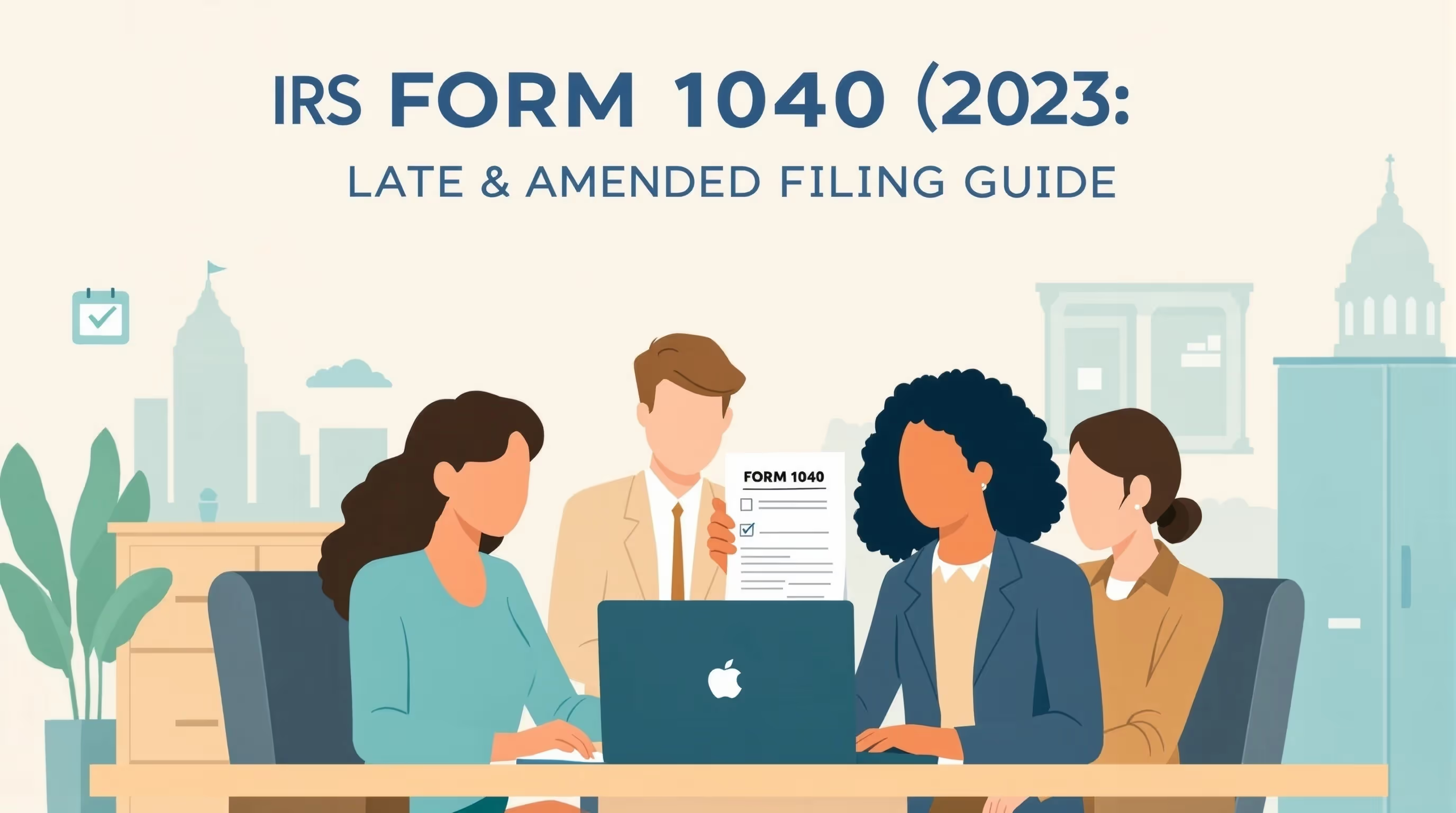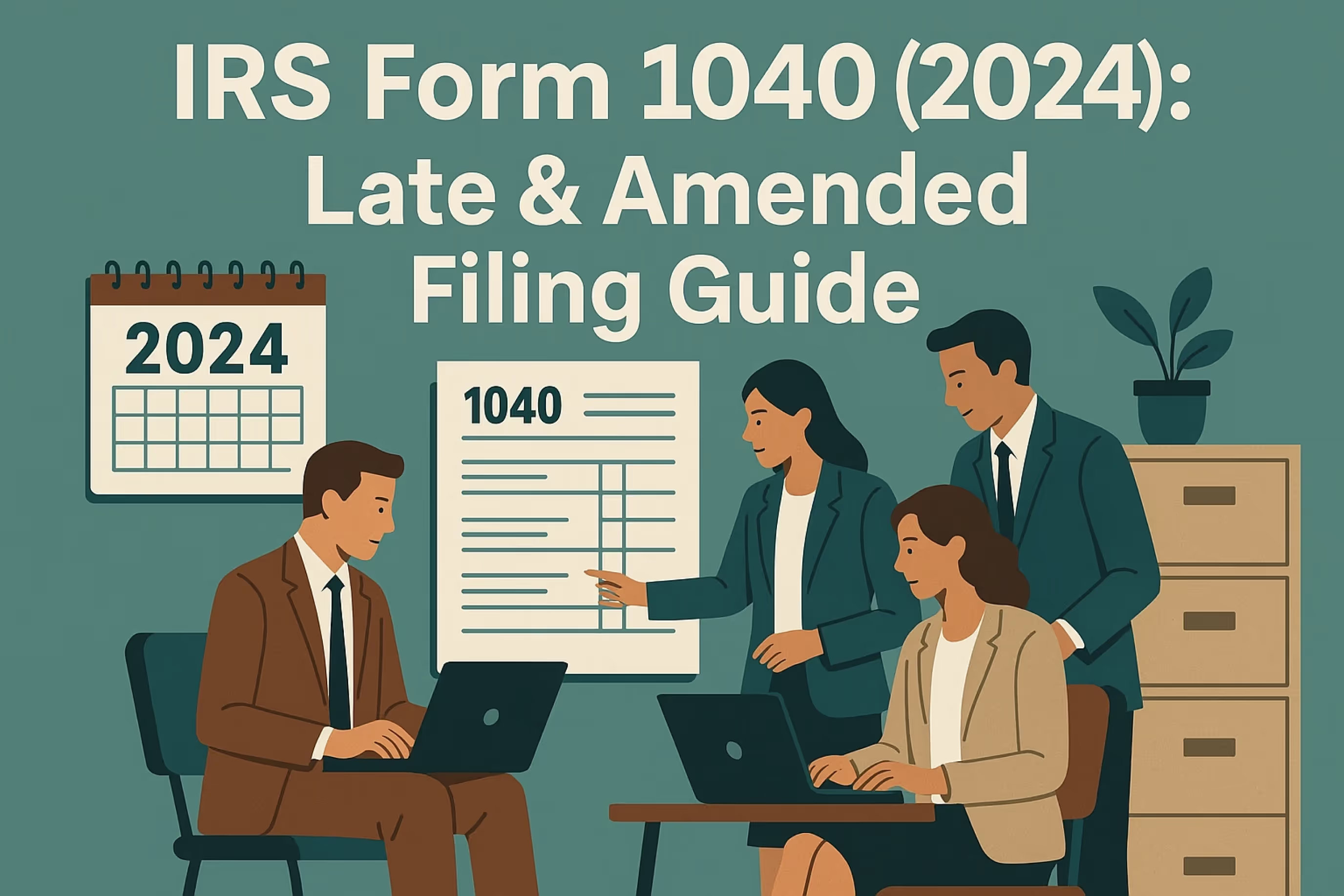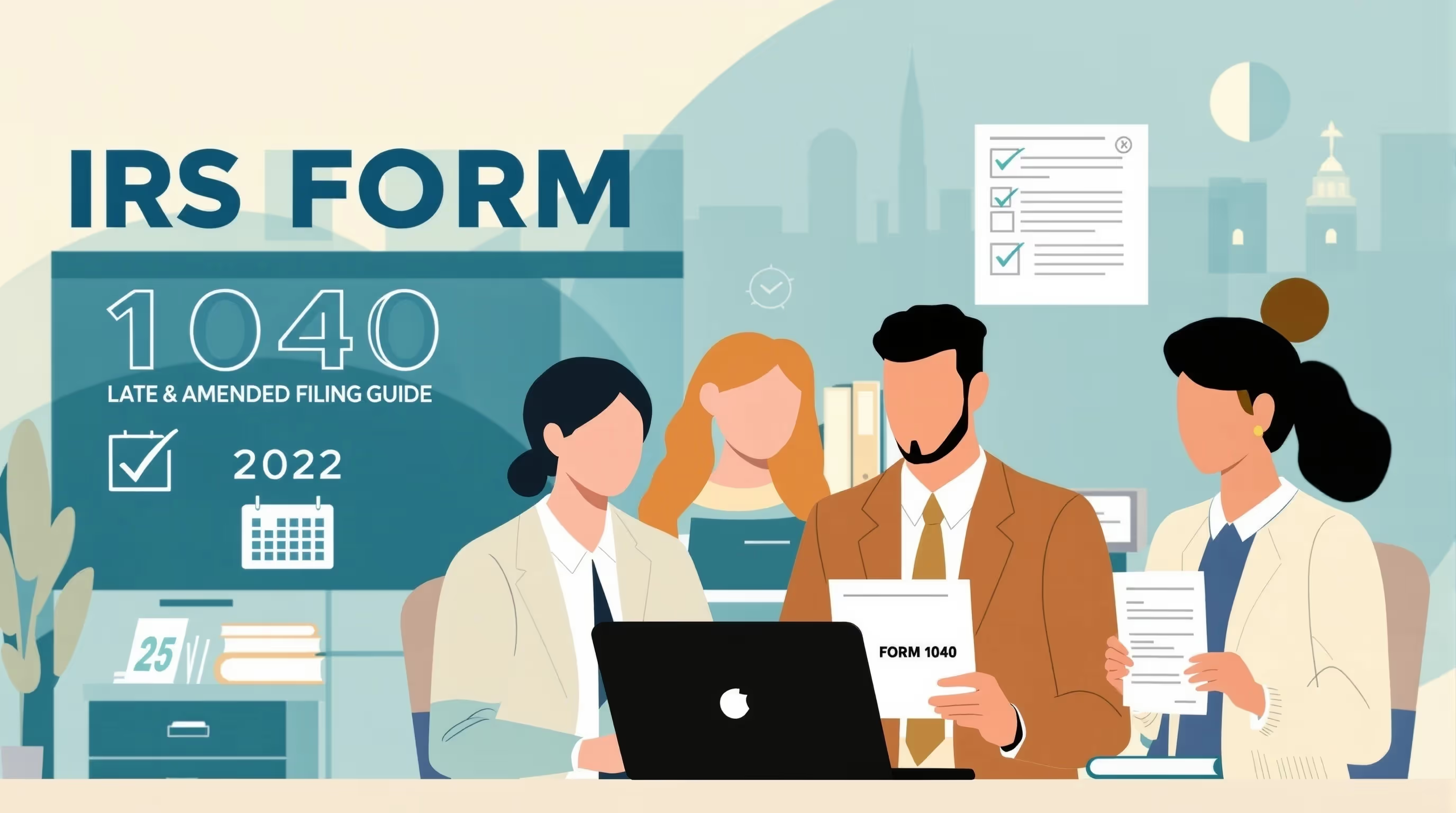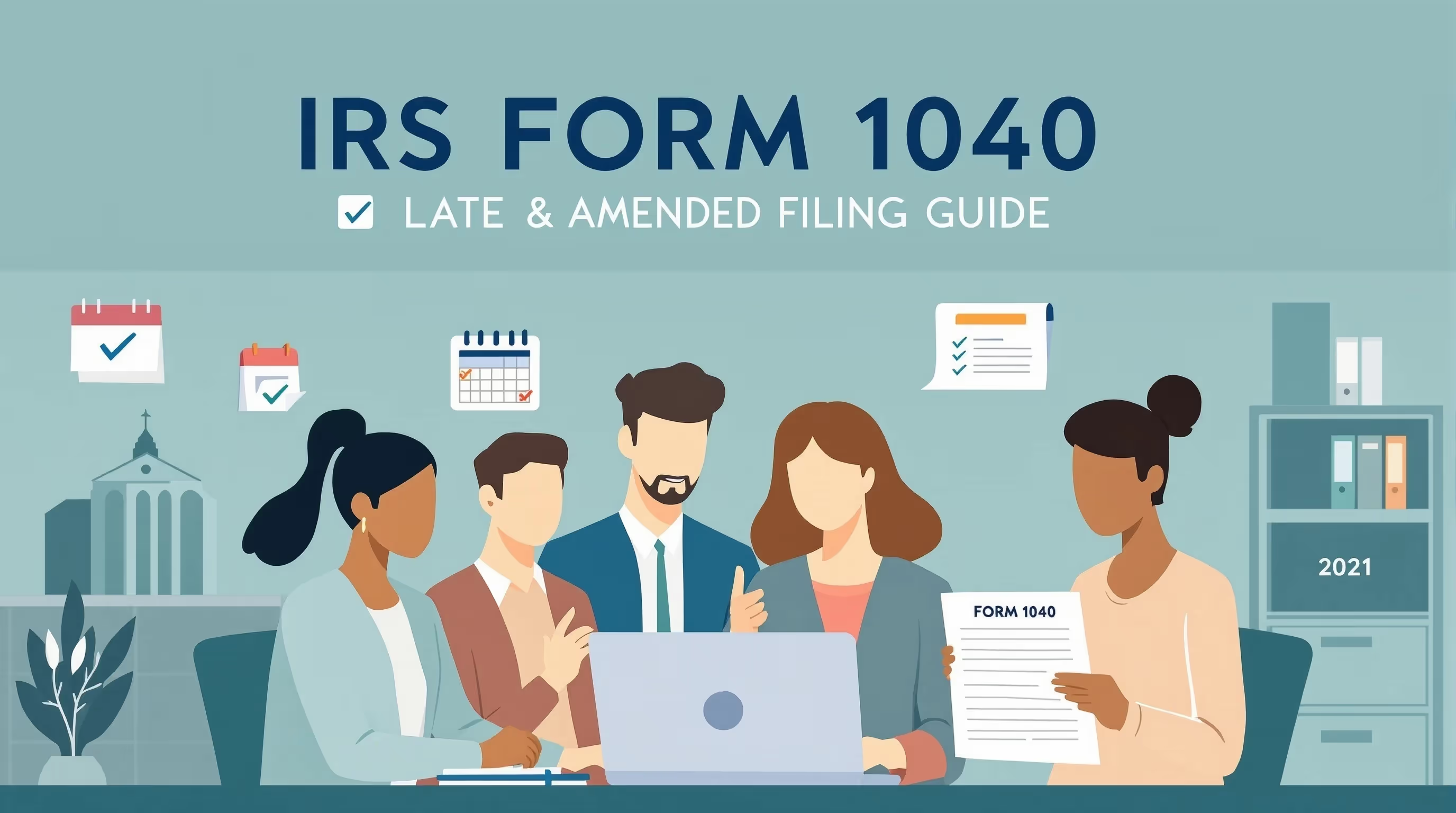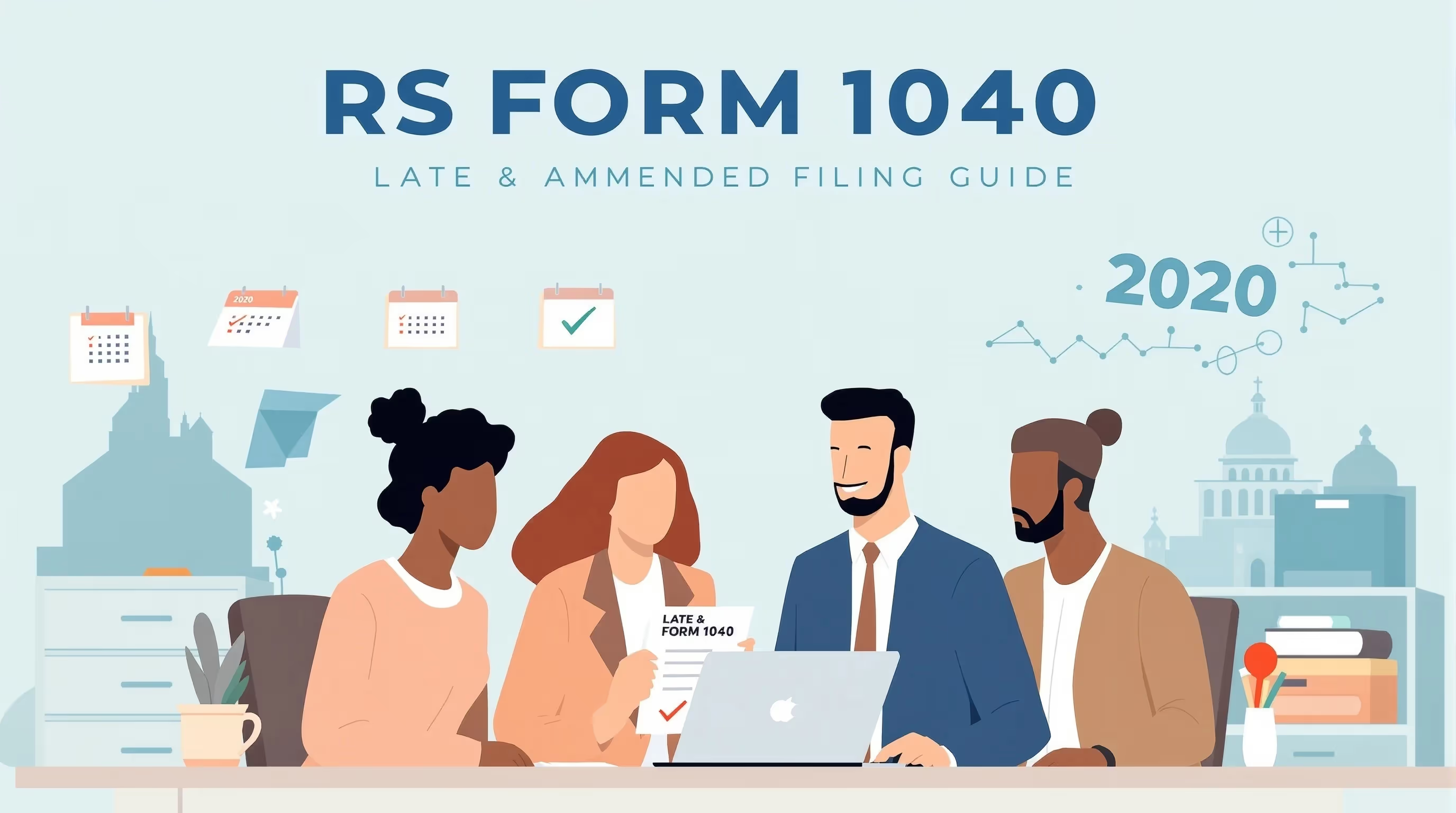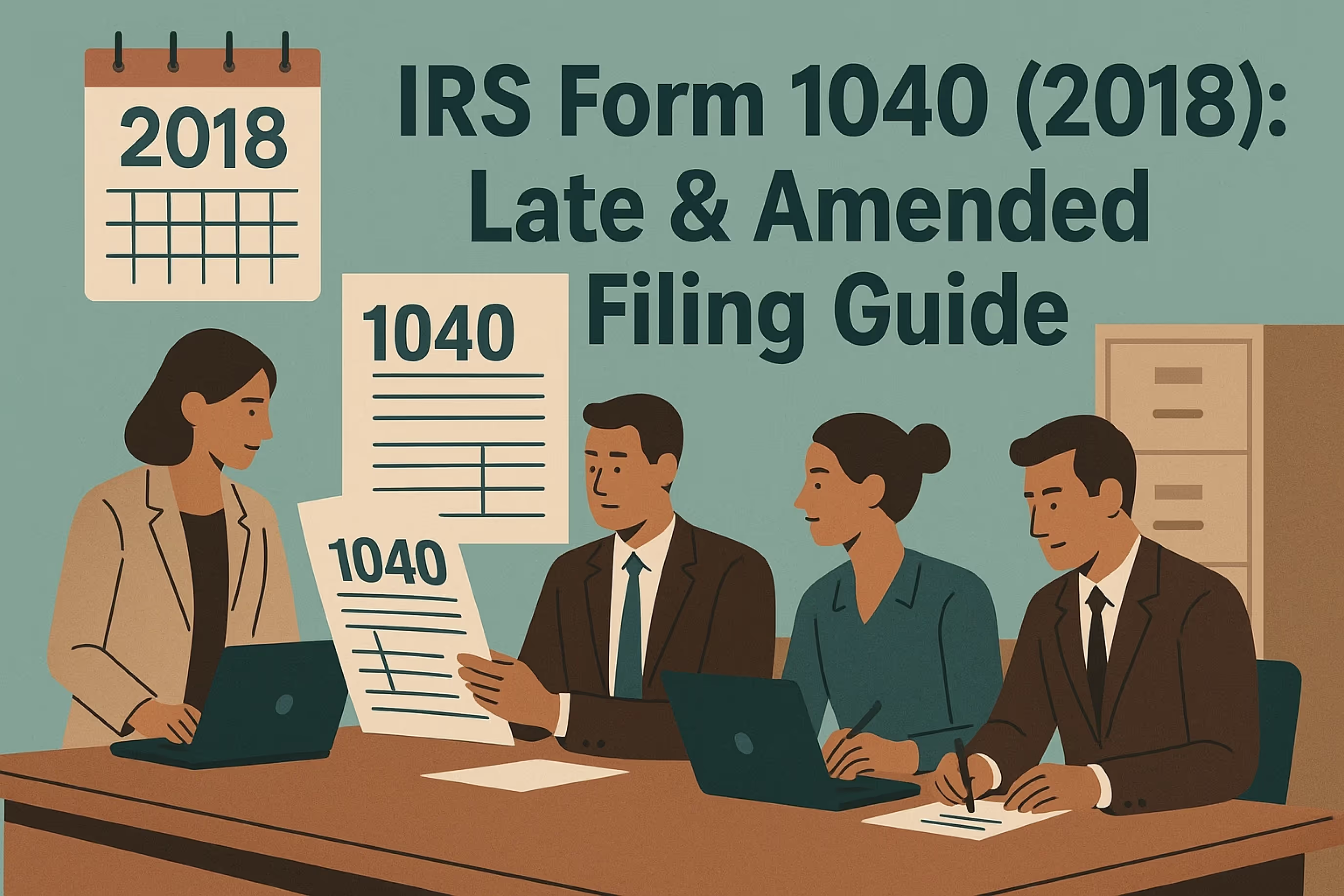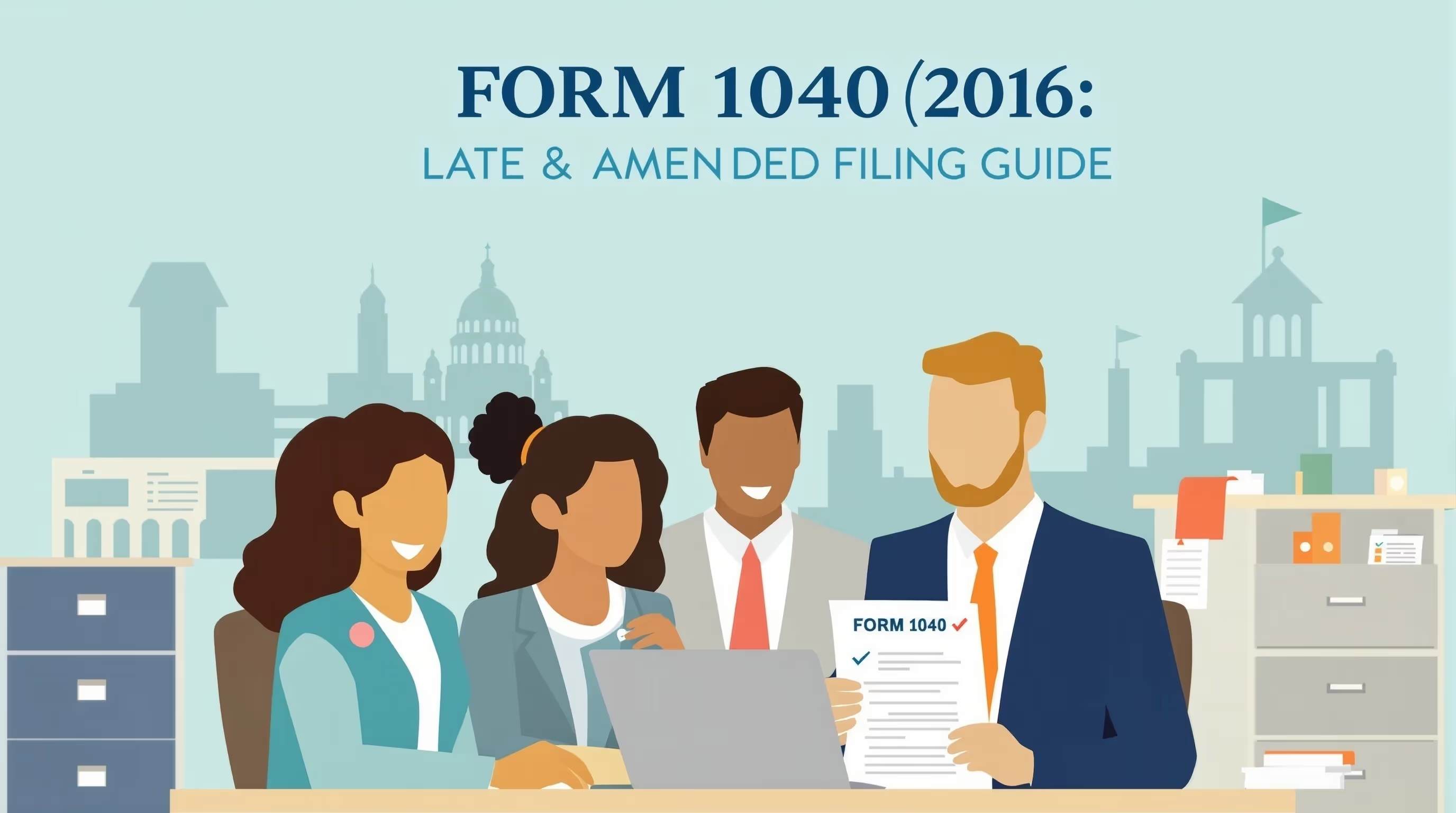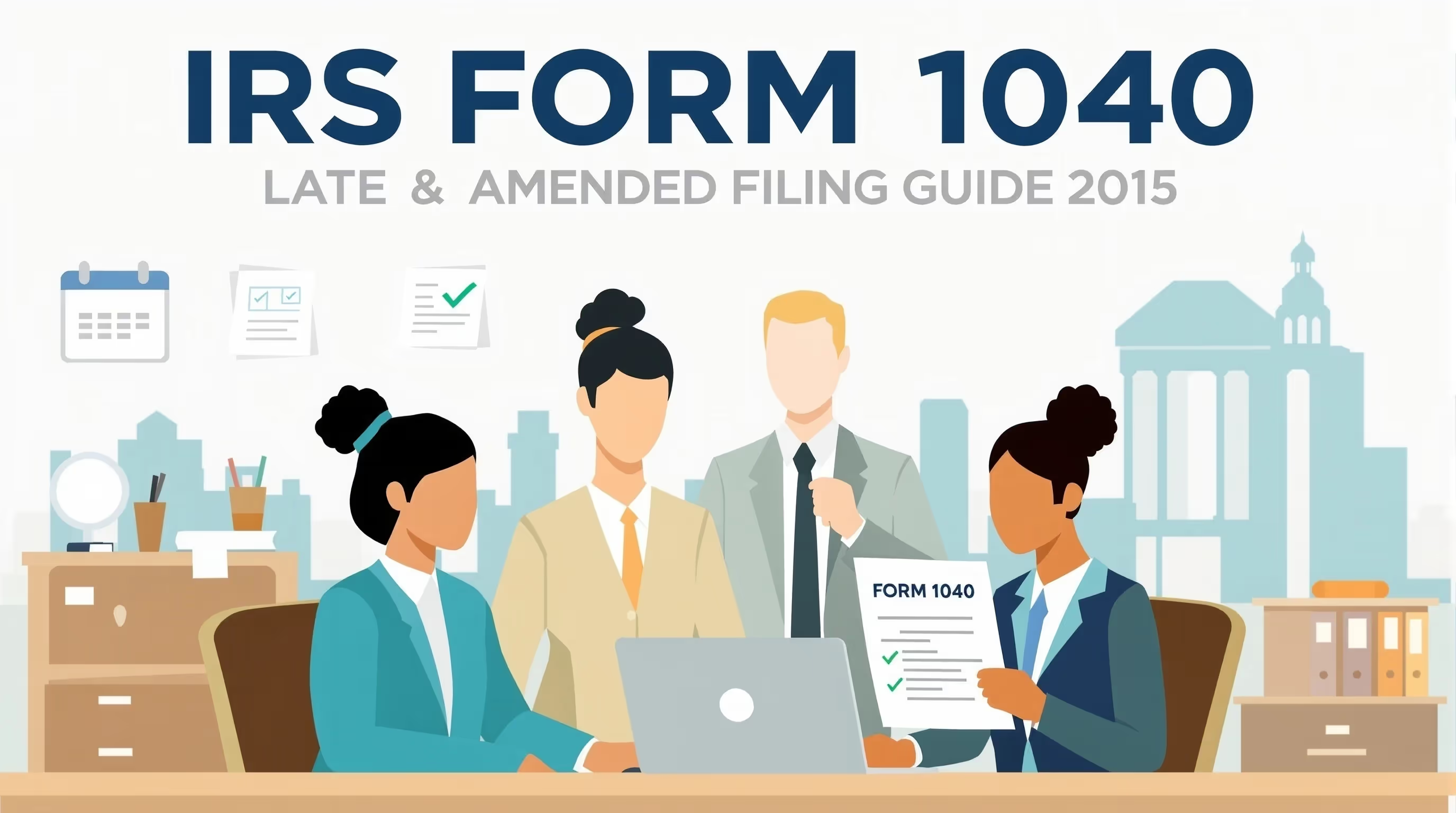IRS Form 1040 (2017): Late & Amended Filing Guide
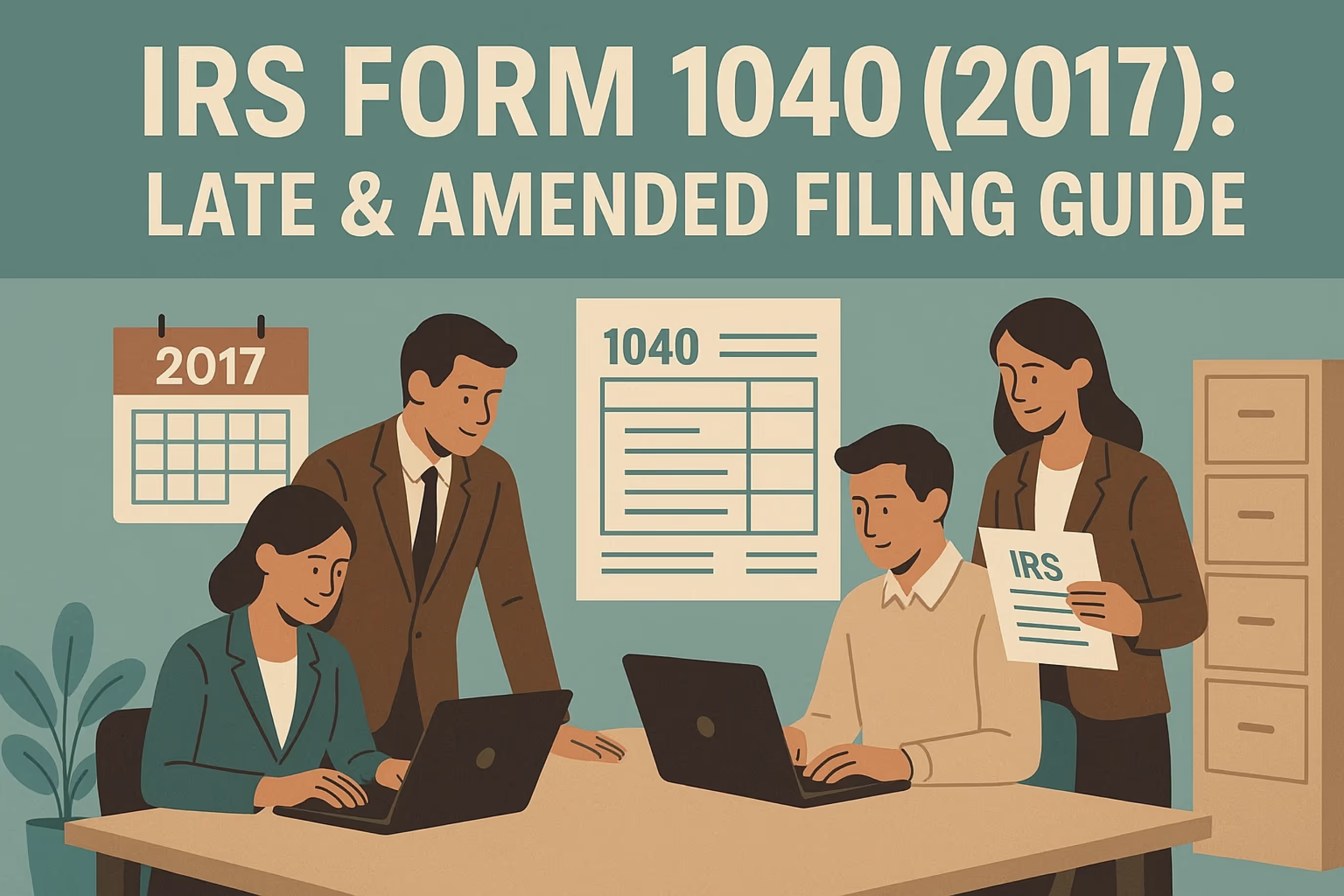
What IRS Form 1040 (2017) Is For
IRS Form 1040 (2017) is the U.S. Individual Income Tax Return used by taxpayers to report income, deductions, and credits and determine whether they are entitled to a refund or owe additional taxes for that year. It applies to all U.S. citizens and resident aliens whose wages, business income, or investment income meet the required filing thresholds.
The form includes details such as filing status, dependents, and any tax credit or deduction you claim. It also determines your refund status or balance due based on total income and payments made during 2017. You can find and download the correct forms and instructions from the IRS Form Help Center, which offers prior-year PDFs and step-by-step assistance.
When You’d Use Form 1040 for 2017 (Late or Amended Filing)
You may need to file a late tax return for 2017 if you never submitted an original return and have received an IRS notice, such as a Substitute for Return (SFR) or a balance due letter. In some cases, taxpayers find unreported income, missed credits, or deductions that could affect what they’re entitled to claim.
Even though the three-year refund statute of limitations expired on April 17, 2021, you should still complete and submit the return if you owe money. Filing unfiled federal returns helps stop penalties and interest from building and may reduce IRS enforcement actions.
If your address or account information has changed since 2017, update it before filing. Late or amended returns should include accurate details so that your refund check or IRS correspondence is sent to the correct home or mailing address.
Key Rules Specific to 2017
The 2017 tax year was the final year before the Tax Cuts and Jobs Act (TCJA) took effect, changing many federal tax rules. The following 2017-specific items applied to individual taxpayers:
- Personal exemptions of $4,050 per taxpayer and dependent were still available.
- Standard deductions were $6,350 for single filers, $12,700 for married filing jointly, and $9,350 for head of household.
- Itemized deduction limitations applied if adjusted gross income exceeded certain thresholds.
- The medical expense deduction threshold was 7.5% of AGI.
Step-by-Step (High Level)
Steps to File a Late 2017 Tax Return
- Request your tax transcripts from IRS.gov or by calling 800-908-9946 to confirm reported income, withholdings, and prior filings.
- Complete IRS Form 1040 (2017) using the correct year’s forms and tax tables—do not use current-year versions.
- Attach required schedules, such as:
- Schedule A (itemized deductions)
- Schedule B for interest and dividends over $1,500
- Schedule C for business income if you were self-employed
- Schedule A (itemized deductions)
- Calculate penalty and interest using current IRS rates.
- Mail or e-file your return. Note: As of 2017, returns can no longer be e-filed through most commercial software. Therefore, paper filing may be required.
- Sign and date your return. Both spouses must sign if they are married and filing jointly.
- Keep copies of your return, forms, and supporting information for future reference.
Common Mistakes and How to Avoid Them
- Using the wrong year forms or tax tables: Always use the 2017 versions.
- Incorrect Social Security numbers or misspelled names: Double-check all personal information to ensure your return can be processed.
- Math errors: Verify every calculation, especially income totals and deductions.
- Missing income: Compare W-2s, 1099s, and IRS transcripts to ensure that all reported income is included.
- Incorrect filing status: Confirm whether you were single, married, or head of household on December 31, 2017.
- Forgotten signatures: Both filers must sign if married filing jointly.
- Failing to apply for eligible credits: Check if you qualify for the Earned Income Tax Credit or education credits for 2017.
What Happens After You File
Once you file, the IRS typically processes paper returns within 6 to 8 weeks. Delays can occur if information is missing, if income was under-reported, or if additional verification is required. You can check your refund status on IRS.gov’s “Where’s My Refund” tool. The page features a locked padlock icon showing that the site is secure.
You can pay in full or apply for an installment plan using Form 9465. Short-term plans (up to 120 days) or long-term agreements are available, depending on how much money you owe. Learn how to qualify with our IRS payment plan guide.
If you can’t pay immediately, contact the IRS or an authorized representative to discuss your account. They may help you establish a payment plan to avoid further penalties and interest charges. If you're overwhelmed or unsure how to proceed, consider authorizing a tax professional through our IRS Power of Attorney guide to manage communication with the IRS on your behalf.
Refunds and Traces
If your refund was deposited into the wrong account, you can request a refund trace. The IRS will investigate and may issue a replacement refund check if appropriate. In some cases, you may be asked to provide a signed statement confirming that you did not receive the funds.
Contact your state tax agency directly if you are waiting for a refund. Federal and state refunds are handled separately, and refund status updates will appear on different websites.
Additional Tips for Taxpayers
- Keep copies of all 2017 forms, notices, and correspondence for your records.
- If you have relocated since 2017, update your address using Form 8822 before filing your tax return.
- To expedite processing, write your Social Security number clearly and ensure that all entries are legible.
- If your refund check is lost, follow the IRS refund trace procedure.
- Always verify that your account and routing numbers are correct before authorizing deposits or payments.
- If you are self-employed, remember that interest, late penalties, and estimated taxes still apply until fully paid.
The IRS charges failure-to-file and failure-to-pay penalties that continue until the balance is paid. You may be eligible for IRS penalty abatement based on reasonable cause or first-time relief criteria.
FAQs
Can I still claim a refund for my 2017 taxes if I never filed a return?
No. The three-year refund statute for 2017 expired on April 17, 2021. You can still file to stop penalties and interest from accumulating if you owe money.
What penalties will I face for filing my 2017 return late?
The failure-to-file penalty is 5% per month of unpaid tax (up to 25%), plus a 0.5% failure-to-pay penalty. Both continue until the tax is fully paid.
Where can I obtain my tax transcripts to prepare my late return?
You can request transcripts from IRS.gov, by calling 800-908-9946, or by mailing Form 4506-T. Transcripts show income and wages reported to the IRS, helping you complete an accurate return.
Should I also file an amended state return?
Yes, if your federal return alters your state tax refund or liability, you should file an amended state return. Check your state’s official site for specific instructions and forms.
Can I e-file my 2017 return?
Most commercial e-file systems no longer support returns for the 2017 tax year. You’ll need to print, sign, and mail your completed forms to the correct address.
What if I can’t pay the full amount I owe?
The IRS offers payment plans. Use Form 9465 to request an installment agreement or speak with a representative to discuss your options.
Will filing my late 2017 return affect my current year tax returns?
Filing a late return generally won’t affect future returns, but it can help resolve account holds or delays in refund processing. It also ensures your records are updated and prevents additional charges.
10 Steps to Complete IRS Form 1040 (2017)
Follow these steps to correctly prepare and file your IRS Form 1040 (2017).
1. Gather all relevant income documentation such as W-2s, 1099s, and other income records.
2. Obtain the official IRS Form 1040 (2017) and instructions from the IRS website or library.
3. Fill out your personal information, including name, address, and Social Security number at the top of the form.
4. Report your income accurately in the designated sections, attaching schedules if needed.
5. Calculate your adjusted gross income and claim deductions and credits according to your eligibility.
6. Complete the tax computation sections to determine your total tax liability.
7. Attach all required schedules, forms, and documentation as specified in the instructions.
8. Note: Choose the option below that fits your specific situation. The correct submission method depends on your IRS notice or the form's official instructions.
• Submit Your Form to the Correct IRS Office
Follow the address or fax number in your IRS notice or from your assigned revenue officer.
If no contact is listed, call 800-829-1040 to confirm where to send it.
Use certified mail or another trackable method and keep proof of delivery.
• File or Mail Your Form 1040 (2017)
Confirm the correct submission address on the official IRS page: https://www.irs.gov/filing/where-to-file-paper-tax-returns-with-or-without-a-payment
Use certified mail and keep proof of delivery if you mail your form.
• Mail Your Form 1040 (2017)
Send to: [Official IRS address]
Use certified mail and keep proof of delivery.
• Submit Your Form
Follow the instructions on the IRS page for electronic or fax submission: https://www.irs.gov/
Keep fax confirmation or submission receipt with your records.
9. Keep Copies for Your Records
Retain your completed form, all attachments, and proof of mailing for at least three years. Store both paper and digital copies securely in case the IRS requests verification later.
10. Sign and mail or electronically submit your completed form. 📞 Need peace of mind before you send it? Call +(888) 260 9441 or schedule a free form review at https://www.gettaxreliefnow.com/.
If you complete these 10 steps, your IRS Form 1040 (2017) should be properly filed and you'll minimize the chance of IRS delays, penalties, or rejections.








